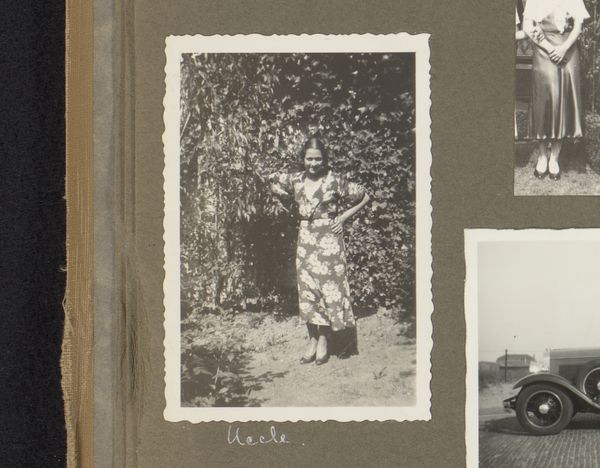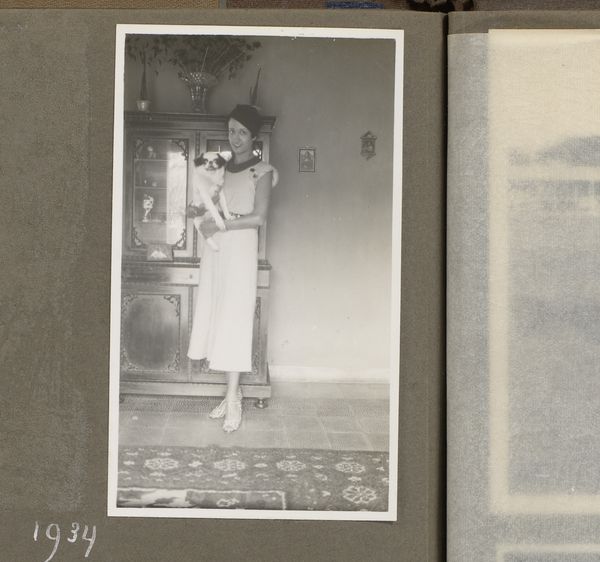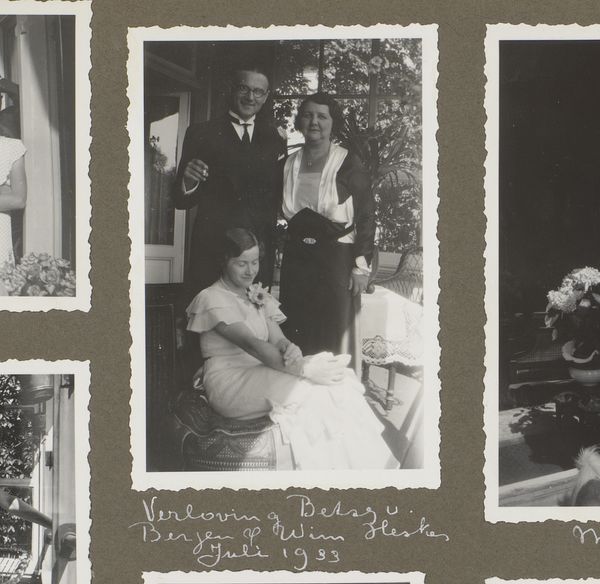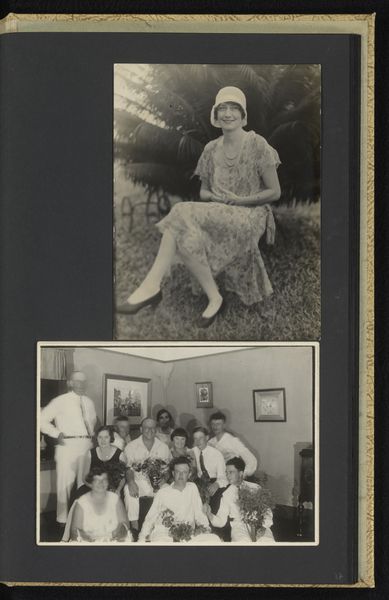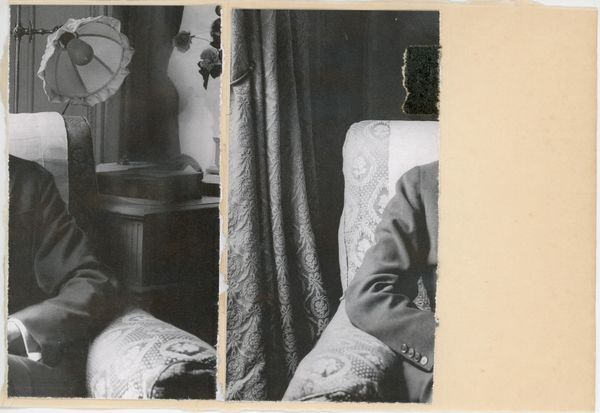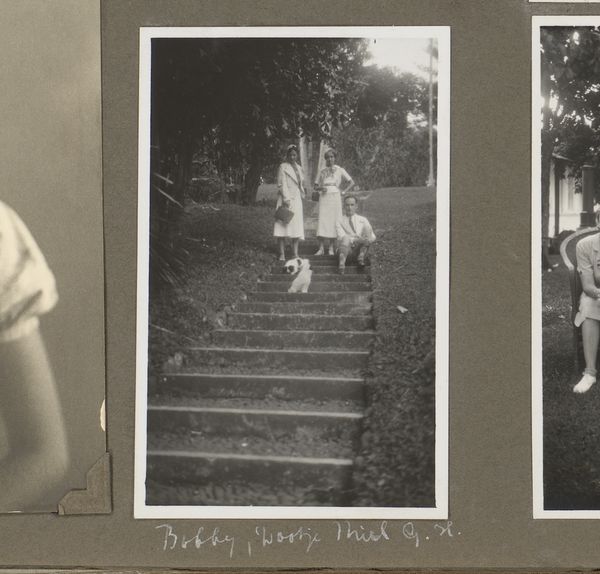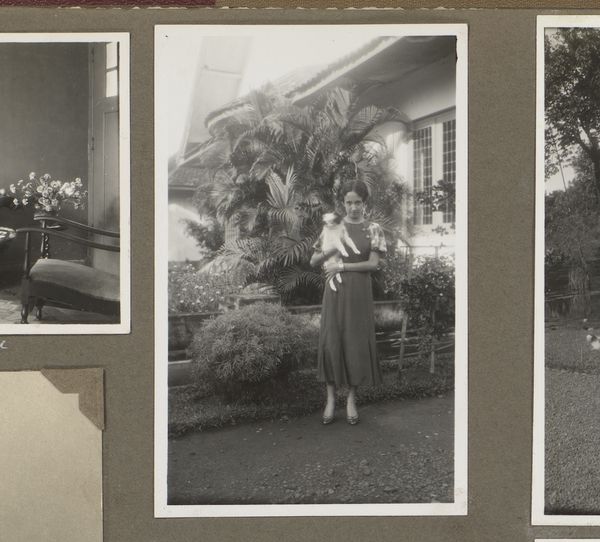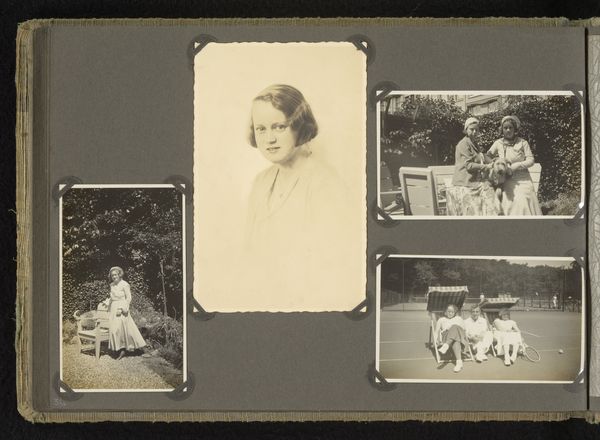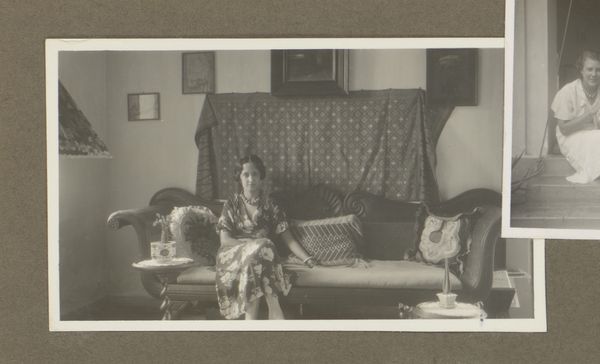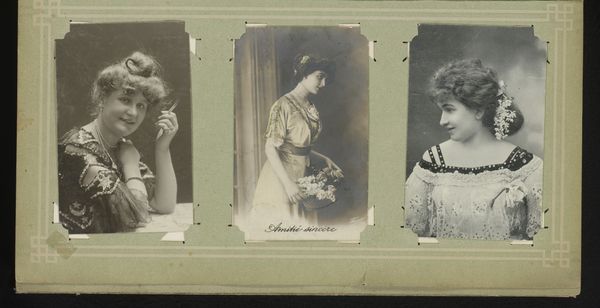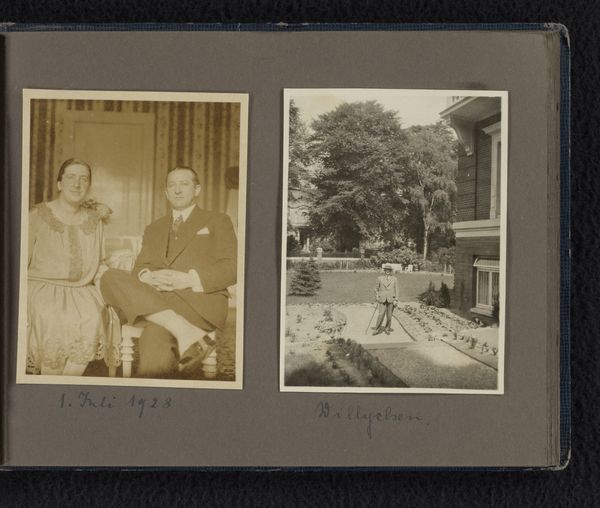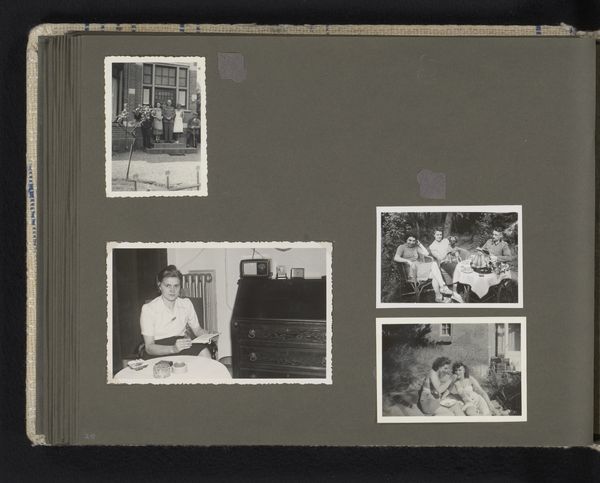
print, photography
#
portrait
# print
#
photography
#
realism
Dimensions: height 111 mm, width 68 mm
Copyright: Rijks Museum: Open Domain
Curator: Today, we're looking at a print from 1932, a photographic portrait entitled "Portret van Dootje van Zijll de Jong bij een boekenkast, Batavia." Editor: It has a lovely, intimate feel. A portrait bathed in muted tones; a certain wistful composure in her posture... I wonder about the space that contains it. It has the curious formality of a moment caught in a domestic setting, don't you think? Curator: The composition definitely relies on careful arrangement. Notice how the vertical lines of the bookcase and her dress create a subtle framework, counterpointed by the softer, floral patterns in her gown and the painting on the wall. Semiotically, one can argue that her dress, positioned in relation to this rather serious domestic architecture, offers an insight into personal freedom. Editor: I read this relationship of figure to space in a similar, yet slightly opposing way. Dootje van Zijll de Jong, photographed in Batavia, now Jakarta, what narratives of Dutch colonial society are imprinted within the seemingly simple gesture of a woman and her bookshelf? We must be alert to the legacy of imperialism subtly embedded within this domestic tableau. What did books even mean for this individual? Curator: It is not so simple: let's attend to the material properties first. The monochrome photography captures the interplay of light and shadow, highlighting textures—the books, the rug—to create visual harmony, and an overall balance. Also, there's the subject’s direct gaze which locks us in; an undeniably successful play of composition that really underscores the realism on display. Editor: Absolutely, the composition, as you say, locks us in, making it a charged portrayal ripe for inquiry into cultural dynamics—the intersection of personal identity, social class, and the fraught history of colonial Indonesia. One wonders about who commissioned it. This kind of photographic artifact can carry considerable sociopolitical weight in understanding diasporic movements and privilege. Curator: Interesting considerations, certainly, which nevertheless must remain speculative without proper historical documentation; as a standalone print, its value lies chiefly in its arrangement and execution. Editor: Agreed, its significance is certainly manifold and continues to provoke critical thoughts. Curator: It serves as an interesting subject for further analysis.
Comments
No comments
Be the first to comment and join the conversation on the ultimate creative platform.
